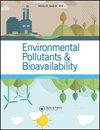滇池河口沉积物中氮组分垂直分布及释放特征
Q3 Chemical Engineering
引用次数: 11
摘要
摘要从滇池五个具有代表性的河口采集了柱状沉积物样品。并测试了各氮组分(IEF-N、CF-N、IMOF-N、OSF-N)的垂直分布。结果表明,A、B、C、D和E区沉积物中的TN含量在0至15cm之间逐渐降低,然后在15至30cm之间急剧降低,并在30cm以下趋于稳定,表明这些地区的外源氮输入没有得到有效控制。沉积物中各种N组分所占TN的比例依次为:OSF-N>IMOF>CF-N>IEF-N。相关分析结果表明,在深层沉积物中,IEF-N和IMOF-N与TFe2O3+MnO+Al2O3的含量均呈显著相关,而在表层沉积物中则无相关。A和B区表层沉积物中氮的释放风险极高。然而,C、D和E区沉积物中的N与上覆水处于相对平衡状态,表明释放潜在风险相对较低。本文章由计算机程序翻译,如有差异,请以英文原文为准。
Vertical distribution and release characteristics of nitrogen fractions in sediments in the estuaries of Dianchi Lake, China
Abstract Columnar sediment samples were collected from five representative estuaries of Dianchi Lake, China. And the vertical distribution of each fraction of nitrogen (IEF-N, CF-N, IMOF-N, OSF-N) were tested. The results showed that the TN content in sediments from areas A, B, C, D and E gradually decreased with depth between 0 and 15 cm, then sharply decreased with depth between 15 and 30 cm and stabilized at depth below 30 cm, indicating the exogenous input of N in these areas has not been controlled effectively. The proportion of TN occupied by various N fractions in the sediments ranked as follows: OSF-N > IMOF > CF-N > IEF-N. Correlation analysis results showed both IEF-N and IMOF-N were significantly correlated with the content of TFe2O3 + MnO + Al2O3 in deeper sediments, while no correlation in superficial sediments. The areas A and B have extremely high release risks for N in superficial sediments. However, the N in the sediments of areas C, D and E were in relative equilibrium with the overlying water, indicating release potential risk was relatively low.
求助全文
通过发布文献求助,成功后即可免费获取论文全文。
去求助
来源期刊
CiteScore
1.62
自引率
0.00%
发文量
0
审稿时长
1 months
期刊介绍:
Chemical Speciation & Bioavailability ( CS&B) is a scholarly, peer-reviewed forum for insights on the chemical aspects of occurrence, distribution, transport, transformation, transfer, fate, and effects of substances in the environment and biota, and their impacts on the uptake of the substances by living organisms. Substances of interests include both beneficial and toxic ones, especially nutrients, heavy metals, persistent organic pollutants, and emerging contaminants, such as engineered nanomaterials, as well as pharmaceuticals and personal-care products as pollutants. It is the aim of this Journal to develop an international community of experienced colleagues to promote the research, discussion, review, and spread of information on chemical speciation and bioavailability, which is a topic of interest to researchers in many disciplines, including environmental, chemical, biological, food, medical, toxicology, and health sciences.
Key themes in the scope of the Journal include, but are not limited to, the following “6Ms”:
Methods for speciation analysis and the evaluation of bioavailability, especially the development, validation, and application of novel methods and techniques.
Media that sustain the processes of release, distribution, transformation, and transfer of chemical speciation; of particular interest are emerging contaminants, such as engineered nanomaterials, pharmaceuticals, and personal-care products.
Mobility of substance species in environment and biota, either spatially or temporally.
Matters that influence the chemical speciation and bioavailability, mainly environmentally relevant conditions.
Mechanisms that govern the transport, transformation, transfer, and fate of chemical speciation in the environment, and the biouptake of substances.
Models for the simulation of chemical speciation and bioavailability, and for the prediction of toxicity.
Chemical Speciation & Bioavailability is a fully open access journal. This means all submitted articles will, if accepted, be available for anyone to read, anywhere, at any time. immediately on publication. There are no charges for submission to this journal.

 求助内容:
求助内容: 应助结果提醒方式:
应助结果提醒方式:


